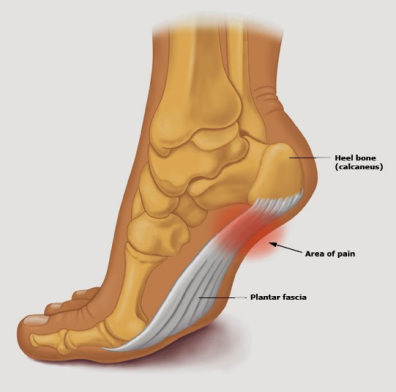You don't have to live with foot pain! At Marquette Physical Therapy we treat many people with foot pain, especially plantar fasciitis. Plantar fasciitis is one of the most common causes of heel pain in adults; 10% of people in the US will suffer from plantar fasciitis in their lifetime, and it can occur in 2 million Americans every year. The good news is physical therapy can treat your heel pain caused by plantar fasciitis!
Is my foot pain plantar fasciitis?
Plantar fasciitis typically presents as the following:
- Increased arch or heel pain first thing in the morning when stepping out of bed
- Pain when walking barefoot or in flat-soled shoes
- Pain after long periods of standing or sitting
- Pain when using the stairs
- Pain with exercises such as running, jumping, or yoga
What is plantar fasciitis?
The plantar fascia is a thick band of connective tissue located on the bottom of the foot. Plantar fasciitis occurs when the plantar fascia becomes inflamed. This inflammation can then cause pain in the arch of the foot as well as in the heel.
Causes of Plantar Fasciitis:
The cause of plantar fasciitis can vary from person to person but some of the common causes include:
Physical Therapy and Plantar Fasciitis:
A licensed Physical Therapist can complete a thorough assessment in order to determine your particular deficits that have lead to plantar fasciitis. The following are common treatments:
Prevention of plantar fasciitis:
In most cases plantar fasciitis can be prevented; here are some simple ways to get started.


